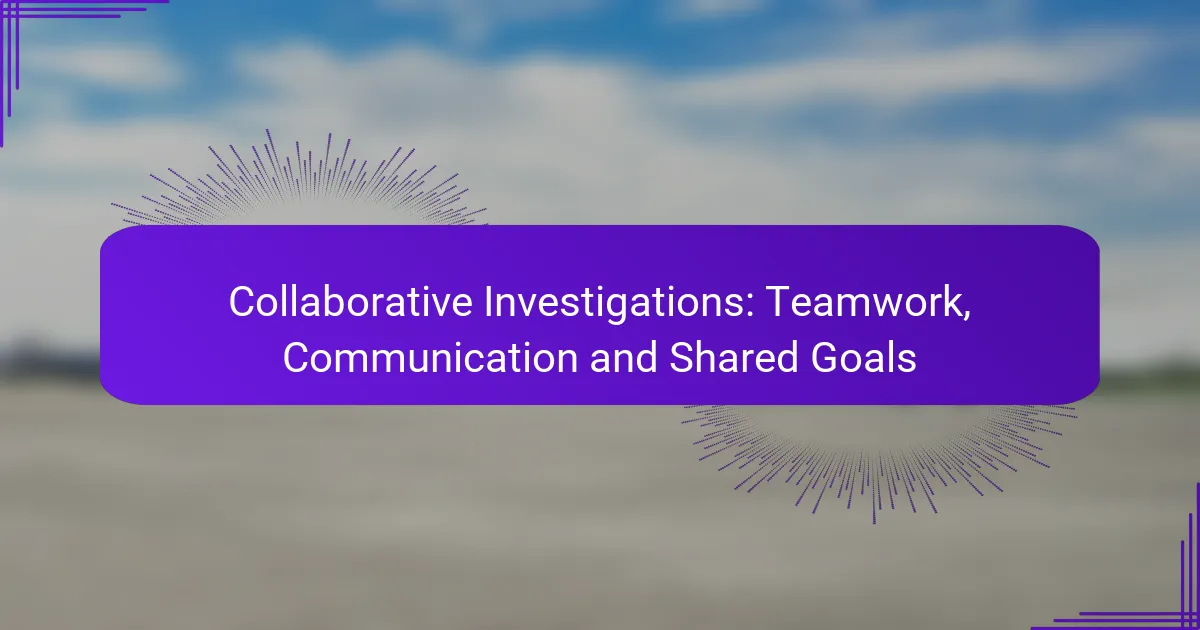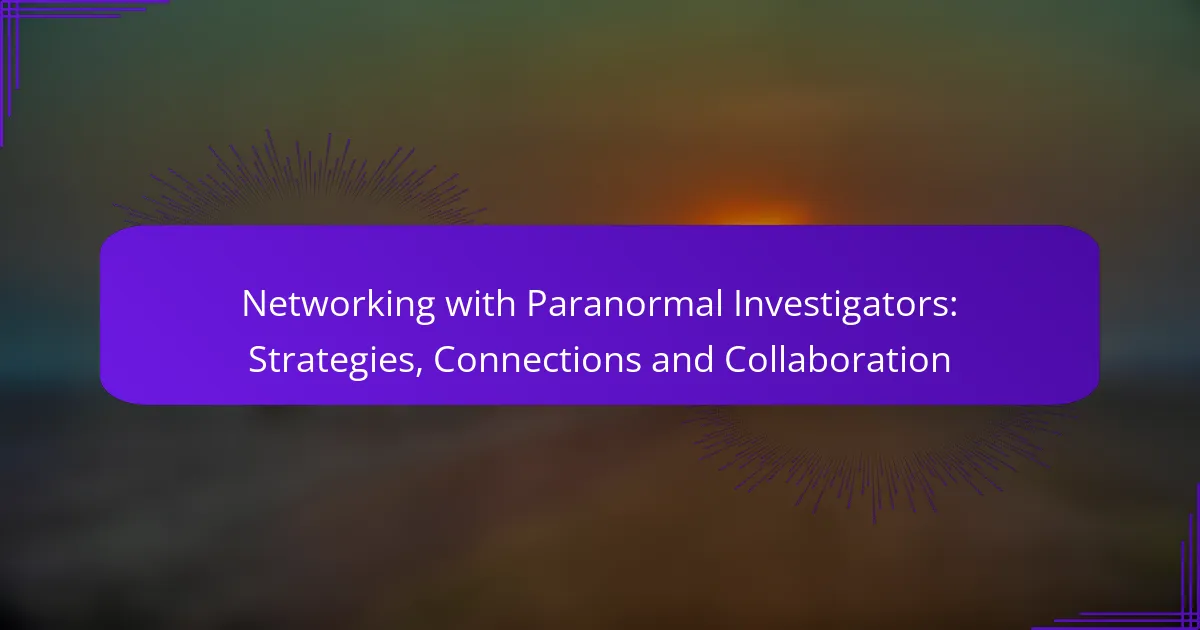Collaborative investigations thrive on teamwork, where diverse skills and perspectives come together to create effective solutions. By establishing clear communication strategies and shared goals, teams can efficiently tackle complex challenges and enhance their overall outcomes.

How can teamwork enhance collaborative investigations?
Teamwork enhances collaborative investigations by pooling diverse skills and perspectives, leading to more effective solutions and outcomes. When individuals work together towards shared goals, they can tackle complex problems more efficiently and creatively.
Improved problem-solving
Teamwork facilitates improved problem-solving by combining various expertise and viewpoints. When team members collaborate, they can identify issues more quickly and develop comprehensive strategies that consider multiple angles.
For example, in a forensic investigation, a diverse team comprising detectives, forensic analysts, and legal experts can dissect evidence from different perspectives, leading to more thorough conclusions. This collaborative approach often results in faster resolution of cases.
Increased creativity
Working in teams fosters increased creativity by encouraging brainstorming and the sharing of innovative ideas. When individuals contribute their unique insights, it can lead to unexpected solutions that may not arise in solitary work.
In a collaborative setting, such as a research project, team members can build on each other’s ideas, leading to novel approaches and methodologies. This synergy often results in more dynamic and effective investigations.
Enhanced accountability
Teamwork enhances accountability by establishing clear roles and responsibilities among members. When individuals know they are part of a team, they are more likely to take ownership of their tasks and contribute actively to the group’s success.
For instance, in a joint investigation, assigning specific roles—such as lead investigator, data analyst, and communication liaison—ensures that everyone is accountable for their part. This structure helps maintain focus and drive towards achieving the investigation’s objectives.
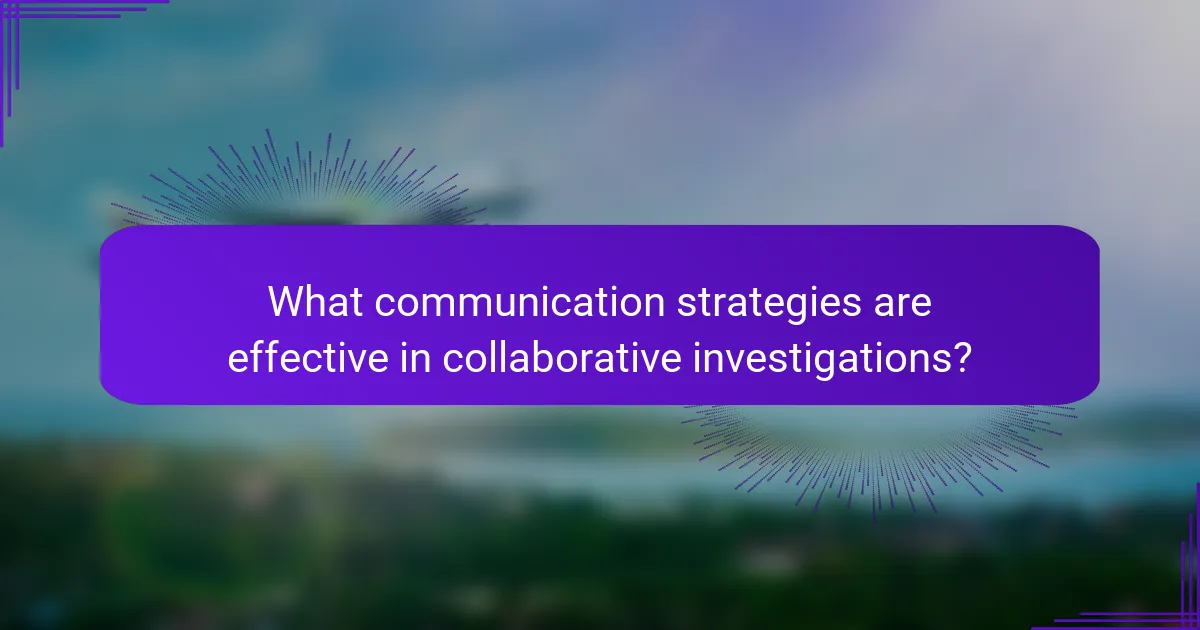
What communication strategies are effective in collaborative investigations?
Effective communication strategies in collaborative investigations include regular check-ins, clear role definitions, and utilizing collaboration tools. These methods enhance teamwork, ensure accountability, and facilitate the sharing of information among team members.
Regular check-ins
Regular check-ins are essential for maintaining alignment and addressing any emerging issues in collaborative investigations. Scheduling brief, consistent meetings—whether daily or weekly—allows team members to share updates, discuss challenges, and adjust plans as needed.
During these check-ins, teams can use a simple agenda to stay focused. Key topics might include progress updates, roadblocks, and next steps. This structured approach helps keep everyone informed and engaged, reducing the risk of miscommunication.
Clear role definitions
Defining clear roles is crucial for effective collaboration in investigations. Each team member should understand their specific responsibilities and how they contribute to the overall goals of the project. This clarity helps prevent overlap and confusion, ensuring that tasks are completed efficiently.
To establish clear roles, teams can create a responsibility assignment matrix (RACI) that outlines who is Responsible, Accountable, Consulted, and Informed for each task. This visual tool aids in accountability and helps team members know whom to approach for specific issues.
Utilizing collaboration tools
Collaboration tools play a vital role in facilitating communication and information sharing in investigations. Platforms like Slack, Microsoft Teams, or Trello can streamline discussions, document sharing, and task management, making it easier for teams to stay connected and organized.
When selecting collaboration tools, consider factors such as ease of use, integration with existing systems, and the specific needs of your team. Training sessions can also enhance adoption and ensure that all members are comfortable using the tools effectively.
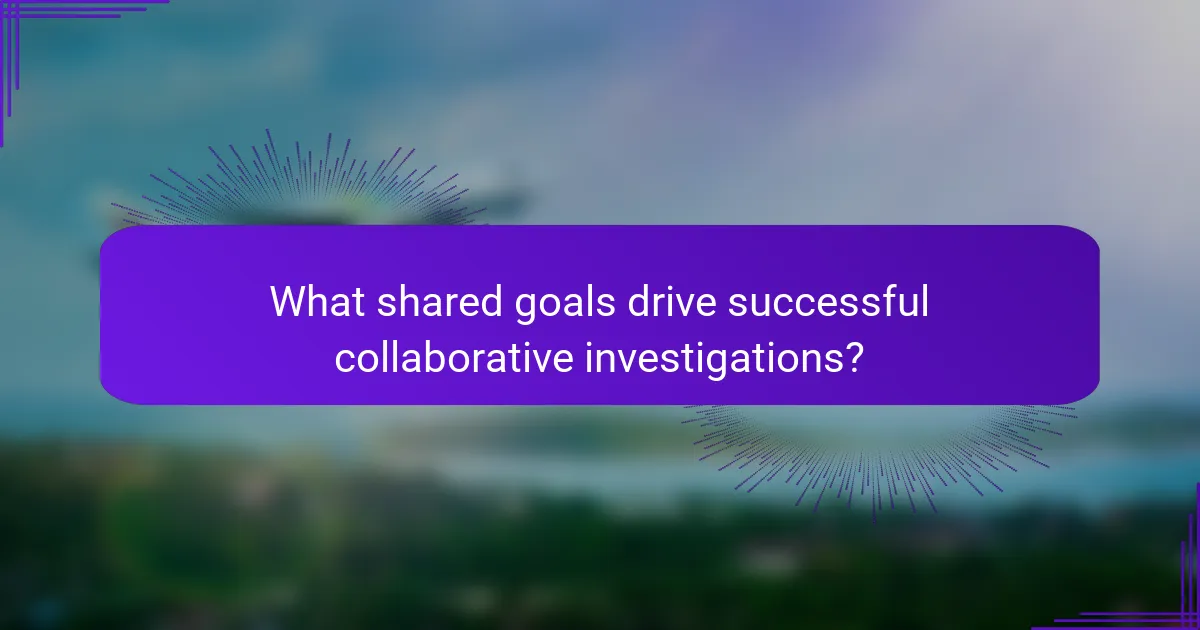
What shared goals drive successful collaborative investigations?
Successful collaborative investigations are driven by shared goals that align the efforts of all team members towards a common purpose. These goals foster teamwork, enhance communication, and ensure that everyone is working towards the same outcomes.
Defined objectives
Defined objectives provide clarity on what the team aims to achieve during the investigation. These objectives should be specific, measurable, achievable, relevant, and time-bound (SMART) to guide the team’s efforts effectively.
For example, a team investigating a cybersecurity breach might set objectives such as identifying the source of the breach within two weeks and implementing security measures within a month. Clear objectives help prioritize tasks and allocate resources efficiently.
Mutual trust
Mutual trust among team members is essential for open communication and collaboration. When team members trust each other, they are more likely to share information freely, voice concerns, and contribute ideas without fear of judgment.
Building trust can be achieved through team-building activities, transparent communication, and consistent follow-through on commitments. For instance, regular check-ins can help reinforce accountability and strengthen relationships within the team.
Collective ownership
Collective ownership means that all team members feel responsible for the investigation’s outcomes, fostering a sense of commitment and accountability. When everyone takes ownership, they are more likely to invest effort and creativity into solving problems.
To encourage collective ownership, teams can implement collaborative tools that allow for shared access to documents and findings. Regularly celebrating milestones and successes can also reinforce this sense of shared responsibility and motivate the team to continue working together effectively.

What tools facilitate teamwork in investigations?
Effective teamwork in investigations relies on tools that enhance collaboration, streamline communication, and organize tasks. Utilizing the right platforms can significantly improve the efficiency and outcomes of investigative efforts.
Trello for task management
Trello is a visual tool that helps teams manage tasks through boards, lists, and cards. Each card can represent a specific task, allowing team members to assign responsibilities, set deadlines, and track progress in real-time.
To maximize Trello’s effectiveness, create boards for different phases of the investigation, such as planning, execution, and review. This structure enables clear visibility of tasks and priorities, ensuring everyone stays aligned on goals.
Slack for communication
Slack is a messaging platform that facilitates instant communication among team members. It allows for organized conversations through channels, direct messages, and file sharing, making it easier to discuss findings and updates promptly.
To enhance collaboration, create dedicated channels for specific topics or projects within Slack. This keeps discussions focused and ensures that important information is easily accessible, reducing the chances of miscommunication.
Google Drive for document sharing
Google Drive provides a cloud-based solution for storing and sharing documents, making it ideal for collaborative investigations. Team members can access, edit, and comment on files in real-time, ensuring everyone has the latest information.
Utilize folders to categorize documents by type or investigation phase, and set appropriate sharing permissions to control access. Regularly update and organize files to maintain clarity and prevent confusion during the investigation process.
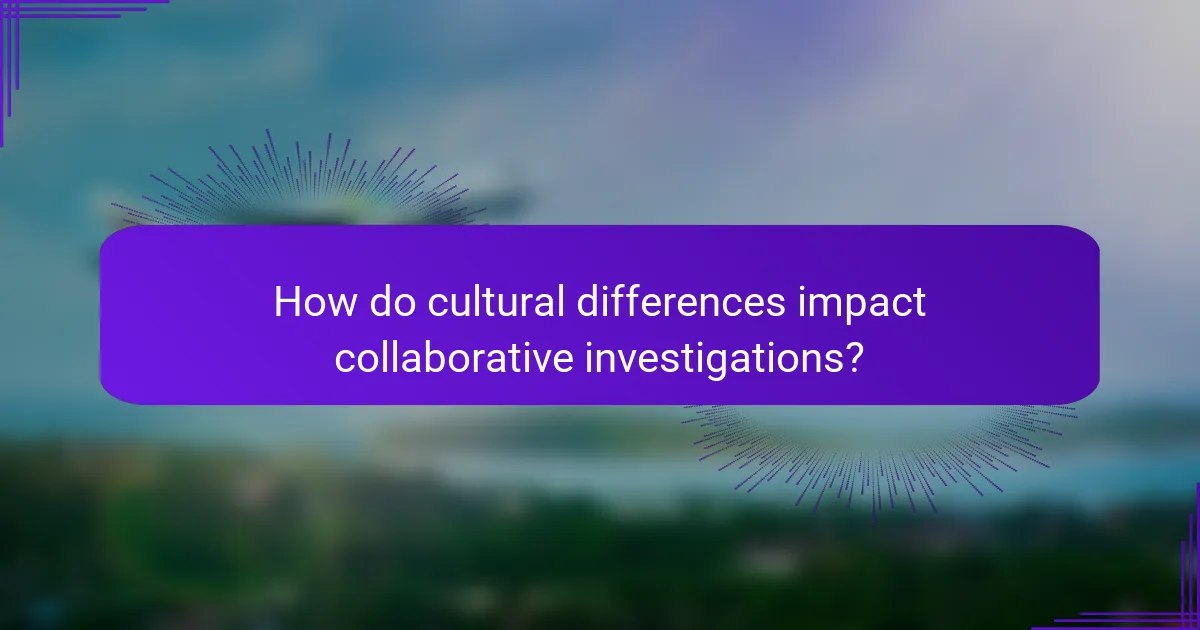
How do cultural differences impact collaborative investigations?
Cultural differences significantly influence collaborative investigations by shaping communication styles, problem-solving methods, and overall team dynamics. Understanding these variations is crucial for fostering effective teamwork and achieving shared goals.
Varied communication styles
Cultural backgrounds often dictate how individuals express themselves and interpret messages. For instance, some cultures prioritize direct communication, while others may rely on indirect cues and context. This can lead to misunderstandings if team members are not aware of these differences.
To navigate varied communication styles, teams should establish clear guidelines for discussions. Regular check-ins and feedback sessions can help clarify intentions and ensure everyone is on the same page. Using visual aids or written summaries can also bridge gaps in understanding.
Diverse problem-solving approaches
Different cultures bring unique perspectives to problem-solving, which can enhance creativity but also create friction. For example, some cultures may favor collaborative brainstorming, while others might lean towards individual analysis before group discussion. Recognizing these approaches can help teams leverage their strengths.
To effectively integrate diverse problem-solving methods, teams can adopt a hybrid approach that combines various techniques. Encouraging open dialogue about preferred methods can foster a more inclusive environment where all ideas are valued. This can lead to more innovative solutions.
Influence on team dynamics
Cultural differences can shape team dynamics by affecting trust, conflict resolution, and leadership styles. Teams may experience challenges if members have conflicting expectations about roles or authority. For instance, hierarchical cultures may struggle in flat organizational structures.
To enhance team dynamics, it is essential to establish a shared understanding of roles and responsibilities early on. Team-building exercises that celebrate cultural diversity can also strengthen relationships and build trust. Regularly revisiting team norms can help address any emerging issues proactively.

What are the prerequisites for effective collaboration?
Effective collaboration requires clear communication, defined roles, and a shared understanding of goals among team members. These prerequisites help ensure that all participants are aligned and can work together efficiently towards common objectives.
Clear objectives
Establishing clear objectives is crucial for successful collaboration. Objectives should be specific, measurable, achievable, relevant, and time-bound (SMART). This clarity helps team members understand their individual contributions and how they fit into the larger project.
When setting objectives, consider involving all team members in the discussion to foster ownership and commitment. For example, if a team is working on a marketing campaign, defining goals such as increasing brand awareness by a specific percentage within a set timeframe can provide direction and motivation.
To avoid confusion, regularly revisit and adjust objectives as needed. This ensures that the team remains focused and can adapt to any changes in circumstances or priorities, maintaining alignment throughout the collaboration process.
